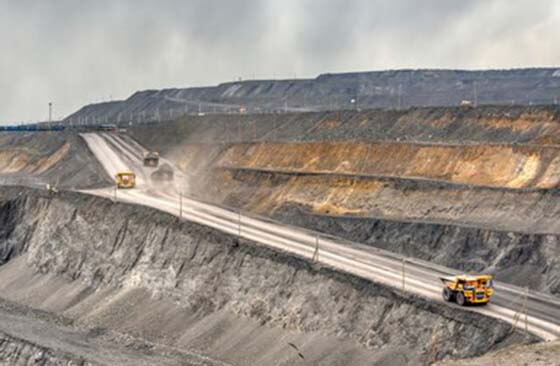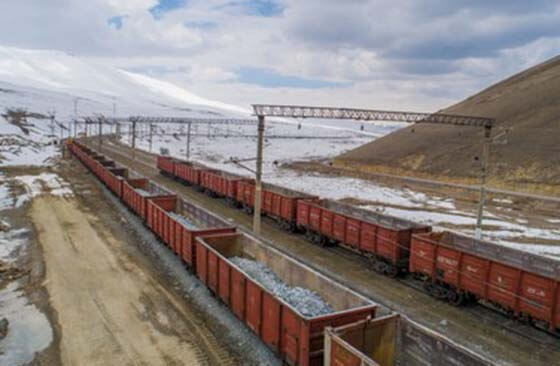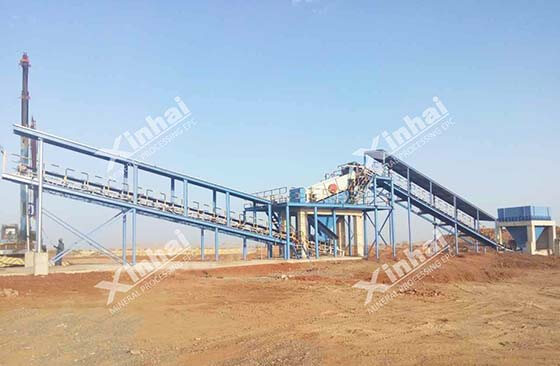

Warm Tip: If you want to know more details about equipment, solutions, etc, please click the button below for free consultation, or leave your requirements!
Before purchasing transportation equipment, we should first determine the conditions of the mine, and choose the most suitable and economical transportation method.
The selection of the exploitation and transportation methods must be comprehensively determined through technical and economic comparison.
The main factors that affect the choice of exploitation and transportation methods are the natural geological conditions of the mine, mining technical conditions (such as mine scale, stope size, production process, technical equipment level and equipment matching), economic factors, etc.
The following are the selection conditions and characteristics of the 5 main transportation methods for open-pit mines. I hope this can help you choose a suitable transportation method for your mine.
Selection Conditions:
1. Road transportation is suitable for deposits with complex topographical conditions and occurrence of ore bodies, with many and scattered ore points;
2. It is suitable for deposits that need to be mined and transported separately;
3. It is suitable for deposits that use steep slope mining technology;
4. The transportation distance is generally within 3km, but for large open-pit mines using electric wheel dump trucks, the reasonable transportation distance can be appropriately increased;
5. It is not suitable for open pit mines with muddy, watery and loose sand layers, nor for open pit mines with heavy rain or complicated hydro geological conditions, poor draining effects, and high mud content.
Features:
1. The transportation line has a large slope, many turns, and a small turning radius, so it has a small amount of engineering, short infrastructure construction time, and low infrastructure investment;
2. Facilitate the use of high and near tailing dumps;
3. Compared with locomotive transportation, it is flexible and adaptable, which can increase the efficiency of excavators by 20%-30%;
4. Deep concave open-pit mines can reduce the amount of infrastructure stripping and slope expansion;
5. High fuel and tire consumption, low equipment utilization, high transportation cost, and short economic transportation distance;
6. Exhaust gas from trucks pollutes the environment.

Selection Conditions:
1. Standard-gauge railway is suitable for large open-pit mines with simple terrain and ore body occurrence;
2. It is suitable for the hillside open-pit mine that has a relative height of about 200m;
3. It is suitable for the deep-concave open-pit mine that has a relative height within 160m, if we use traction unit to transport, the relative height can be 300m;
4. Narrow gauge railway is suitable for medium and small open-pit mines with simple terrain and small relative height.
Features:
1. Large transportation volume;
2. The work amount of building the line is large, the infrastructure investment is large, and the infrastructure construction time is long;
3. The shifting workload of stope and stripped material disposal site is large;
4. The slope is smaller than that of the automobile highway transportation, so the mining depth is restricted, generally 200-250m;
5. Economical and reasonable transportation distance can be long, generally above 4km.

Selection Conditions:
1. For the deep-pit open-pit mine with large strike length, width and vertical depth, the shallow part is transported by rail, and the deep part is transported by road;
2. For the open-pit mine that the upper part has complex topography and large relative height, the central stope is wide, the terrain allows the arrangement of quasi-gauge railway lines, and the deep part has a narrow size and large height difference, the upper part and the deep part should use road transportation, and the middle part should use railway transportation;
3. For large-scale deep-pit open-pit mines with flat surface terrain and large plane size, if the slope part is within 200m, the road-rail combined transportation with external trenches may be given priority.
Features:
1. This joint transportation method can give full play to the respective advantages of road transportation and railway transportation, such as high climbing ability and flexibility of road transportation and large transportation volume of railway transportation;
2. Except for direct reshipment in small mines, most mines generally have reshipment stations (or reshipment silos).
Selection Conditions:
1. This method is suitable for high-mountain deposits with a relatively large relative height, the relative height is generally greater than 120m, and the terrain slope is less than 30°;
2. The orepass is generally only suitable for dumping ores. Only when the waste rock cannot be directly transported to the dumping site or is uneconomical, and the lithology is good, the orepass can be used to dump the rock;
3. One orepass is generally only suitable for dumping one kind of ore, and multi-grade mines should have a special orepass;
4. For the ore that has high cohesiveness, causes blockage in the orepass drawing or fragile ore that would produce a large amount of fine ore during the dumping and seriously reduce the value of the ore, orepass transportation is not suitable;
5. The footrill orepass is only suitable for arranging in solid sections with good engineering geological conditions and good rock formations. We should avoid layouts in sections with complex hydrogeology and large fracture zones.
Features:
1. This method uses the ore's own weight to slide down, thus can reducing the cost of transportation equipment and the workload transportation lines construction;
2. The transportation distance can be shortened, so that the cost of ore production would be lower, and the economic effect would be better;
3. The amount of infrastructure construction of the orepass and flat tunnel is relatively large, and the construction period is relatively long;
4. Large production capacity;
5. Save energy
Selection Conditions:
1. This method is suitable for large-scale or extra-large open-pit mines with large transportation volume, long transportation distance, deep vertical height, and long service life. It is generally suitable when the ore output exceeds 10 million t/a;
2. It is generally not suitable for open-pit mines with a depth of less than 100m.
Features:
1. Large production capacity;
2. Able to overcome large terrain height differences;
3. The transportation fee of ore and rock using this method is lower than the freight using automobile transportation.

The above is the selection conditions and features of these 5 transportation methods, you can refer to them to choose a suitable transportation method of your open-pit mine. If you plan to buy a tipper truck for the road transportation, we have these two articles about how to choose a suitable tipper truck and the price of tipper truck.
If you have any questions about the content of this article, or want to buy a dump truck, please contact the online customer service to communicate, or leave a message on the website, we will talk to you in detail as soon as possible.
Last: Tipper Truck Price
12 Underground Gold Mining Method
 0
0
 3678
3678
23 Open-Pit Phosphate Mining Process You Need to Know
 1
1
 3300
3300
34 Types of Rock Drill
 0
0
 2838
2838


What Are the Differences Between CIP and CIL?
 11178
11178
 0
0